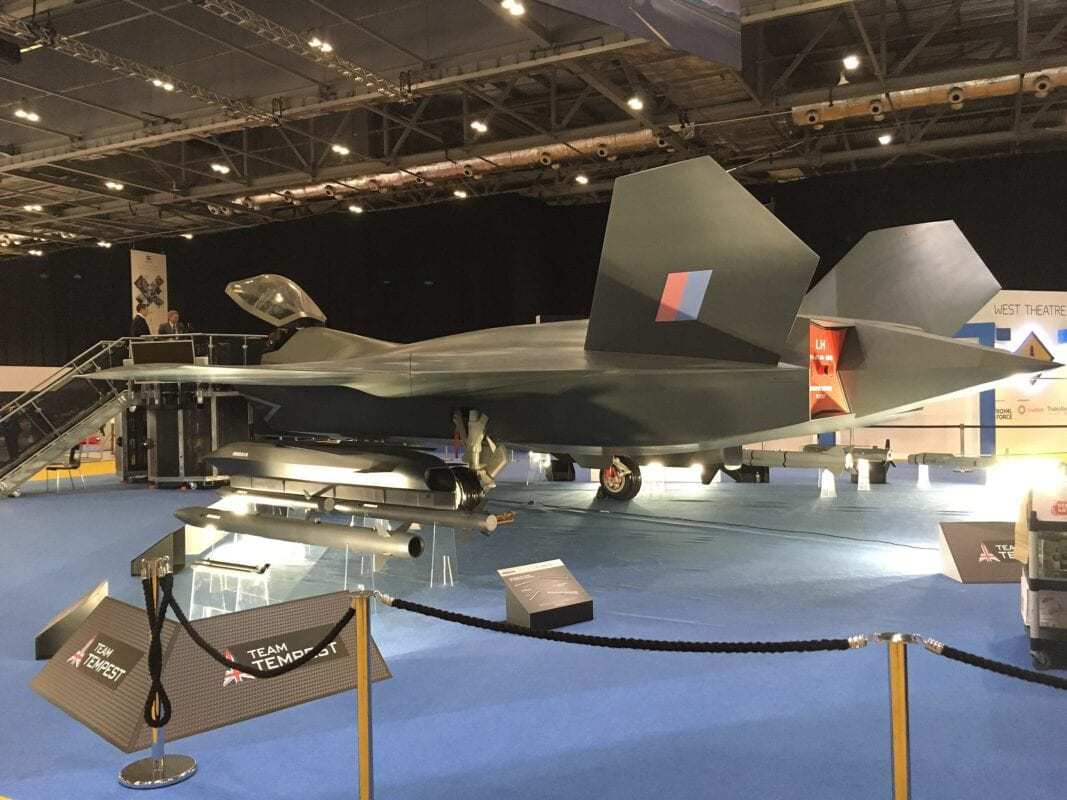The United Kingdom has already plunked down $347 million for the infrastructure to produce the Tempest, its planned 6th-generation warplane. And that’s not all. The British have promised another $2.7 billion will be spent on the Tempest program in the next four years. This is a big gamble as Britain is depending on a consortium of home-grown defense contractors plus firms from other countries to also invest in the Tempest.
Everything is on the table for the Tempest. It may field hypersonic weapons and lasers. It could have an exciting suite of sensors that can obtain accurate second-by-second battlefield information that it can share with other platforms. It could have amazing command and control attributes. There are plans for augmented reality and artificial intelligence in the cockpit. The hope is all will be ready to introduce the airplane in 2035.
Too Many Players?
This all sounds exciting, but there’s a catch. Procurement and acquisition of the airplane could get dicey.
Instead of one prime contractor from one country in charge of production, there are several defense firms from more than one country. Currently, five contractors, called “Team Tempest” are playing on the project: BAE Systems, Saab, Leonardo, Rolls-Royce, and MBDA as well as 200 smaller businesses and some universities. That is Sweden and Italy so far and maybe Japan could enter the partnership as well.
To make things more confusing, there is another next-generation fighter effort called Future Combat Air System. This consortium is made up of France, Germany, and Spain. There is a discussion that Future Combat Air System and the Tempest program would combine forces to make one program for the 6th Generation fighter.
More Partners More Problems
This seems like the classic case of too many cooks in the kitchen. It is difficult enough to integrate systems on such a complex platform. For example, the F-22’s prime contractor was Lockheed Martin, but Boeing did avionics work. Those are both obviously American corporations. But the F-22 went through a litany of problems, including a crash last year and pilot health problems with the airplane’s oxygen system.
Who Is to Blame When Things Go Bad?
Who takes responsibility for the Tempest if things go wrong? And they often do in defense acquisition.
If there are delays in delivery and cost overruns, who is to blame? The buck must stop with somebody.
The British Ministry of Defence is reportedly all in on the Tempest program and Team Tempest has entered the concept and assessment phase of the program. But the whole thing seems to have corporate risk as well. What if priorities change with the defense contractors in Sweden and Italy? If Saab or Leonardo pull out, where does that leave the Tempest?
The British seem to be saying that “We will lay down the groundwork and our partners will invest time, money and resources and then we will own the airplane.” That makes sense if it were totally a British project, but this is not the case.

Tempest Stealth Fighter. Artist Image from BAE.

A mock-up of the Tempest in 2019.
Any Airplane Program Is Risky
So, this whole “Team Tempest” aspect is fraught with risk. And the British are investing a ton of money into it already. The Brits have also not been forthcoming about the strategic and tactical uses of the Tempest. Is it to take on the Russians? Is it for homeland defense? Will it fly with NATO members? Will Sweden or Italy by their own models? All these questions must be answered for the Tempest to become a reality.
1945’s new Defense and National Security Editor, Brent M. Eastwood, PhD, is the author of Humans, Machines, and Data: Future Trends in Warfare. He is an Emerging Threats expert and former U.S. Army Infantry officer.

